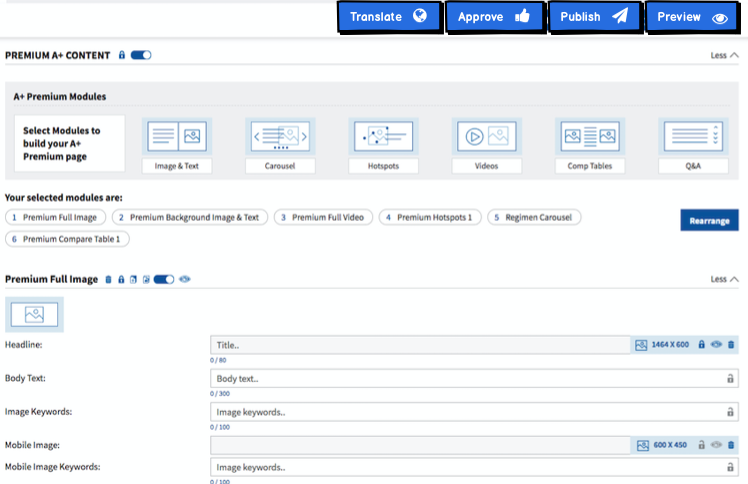 With Digishare, the ease and convenience of the Amazon API tool can be harnessed for your entire catalogue.
With Digishare, the ease and convenience of the Amazon API tool can be harnessed for your entire catalogue.
Let’s be blunt: the Amazon API is a great tool. New Item Setups are one of the most vital and frustrating tasks when it comes to managing products on Amazon. The ability to quickly provide the required information and send for automatic publishing is a huge quality of life upgrade.
But what if you want to update an existing product?
Think about it: what if the big product launch this quarter has an error in the specifications? Maybe something changed late in the launch cycle, and you need to ensure dozens of existing products are amended ASAP? Or, perhaps a popular legacy line needs updating?
Normally you’ll be forced into the familiar (and lengthy) cycle of messages, tickets and spreadsheets. Without direct control over your product content, you’ll be at the mercy of the those at the other end of an email chain, with no clear visibility of when (or if) you’ll get your pages fixed.
That’s why Digishare’s Amazon API is different. Not just for new items, our tool allows you to call up the information for any of the products in your catalogue, edit them, and then republish them in a matter of minutes. It’s that powerful, giving you a level of direct control over your content that we could have only dreamed about a few years ago.
What’s more, it’s provided to you in a simple, easy-to-use format. Our tool is clear, concise and auto-validates your data, allowing you to see at a glance which values are missing or do not meet Amazon’s requirements.
If you would like to see how much time and hassle Digishare’s Amazon API can help save you from, we’d love to chat to you – contact us at info@digishare.eu

 Have you ever typed a word so many times that it stops looking real? After submitting 1500 A+ pages to Amazon on behalf of one of our client brands, we can confirm it’s not only words that start to feel a bit strange. Images, layouts, existential concepts—at some point, all of these acquired a sheen of unreality, forcing us to step away from the screen and indulge in a fortifying cup of coffee before pressing on.
Have you ever typed a word so many times that it stops looking real? After submitting 1500 A+ pages to Amazon on behalf of one of our client brands, we can confirm it’s not only words that start to feel a bit strange. Images, layouts, existential concepts—at some point, all of these acquired a sheen of unreality, forcing us to step away from the screen and indulge in a fortifying cup of coffee before pressing on.